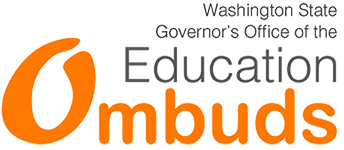How Does a School District Work?
How School District Leadership is Organized
- School Board - Elected by voters to set goals, conduct strategic planning, hire and oversee the superintendent, adopt the school district budget and create policy.
- Superintendent - Hired by the school board to manage the school district.
- Principal - Reports to the superintendent. Manages staff and student body and day-to-day operations of the school.
- Teachers - Report to the principal.
Be An Active Citizen At School Board Meetings
You can help set policies in your school district by communicating your thoughts to your school board members.
- Get an agenda Agendas are made public at least 24 hours ahead of the school board meeting. You may find the agenda on the school district website.
- Arrange to speak at a board meeting. Regular school board meetings usually include opportunities for public comment. Many boards provide a sign-up sheet near the entrance to the board room.
- Represent a community group to the school board. Report board actions to your group.
- Look for meeting broadcasts on cable TV, or ask the district office if there is an e-mail list for people interested in school board news.
- Write or phone your school board representative to make your opinions known.
All school board meetings are open to the public except when the topic is a real estate transaction, personnel matter, pending litigation, contract negotiations, or a formal hearing.
School Board Basics
School board members are also called directors. There are five members on a school board except in the state's largest district, Seattle Public Schools, where the board has seven members.
School Board Members:
- Are elected by the voters in each school district every other year (in odd-numbered years).
- Serve staggered terms. Not all positions are open every election.
- Are paid a small daily fee in some districts, while directors in other districts receive only reimbursement for expenses. This is determined by board policy.
- May be elected "at large," or be elected from specific neighborhoods within a district. Each director represents the interests of students in the whole district.
- Serve four-year terms (except in Spokane, Tacoma, and Everett, where board members serve six-year terms.)
Board's Role
- Creating a vision and setting goals for the school district
- Strategic planning
- Hiring the superintendent
- Overall policymaking and oversight
- Approving and monitoring the district's budget and education plans
- Representing voters of their community
Who Can Be A School Board Member?
A school director position is open to any person who is a registered voter in the school district. The candidate must file financial disclosures and win the school board election.
Teachers, Principals and Other Staff Members
The first person you meet at school is likely to be your child's teacher, the person most directly involved in your child's education. Classroom teachers instruct and evaluate students to help them meet academic standards.
The teachers' supervisor is the school principal, whose role includes: managing day-to-day operations of the school and all its financial and human resources, providing staff development to increase student performance, evaluating school staff and programs, and building relationships with parents and the community. As a parent, you are welcome to meet with your student's principal.
School staff may also include assistant principals, a school secretary, teachers' aides, librarians, counselors, family support workers and bilingual aides.
Most teachers and many other school district employees belong to labor unions. Unions negotiate with the school board to create contracts that outline working conditions and pay and set the calendar for school days and school vacations. Employees must be hired or dismissed according to contract provisions.
School District Finance
School district finance is a complicated subject, because money comes from a variety of sources and usually can only be spent for designated purposes. For example, if a school district's voters approve a levy to remodel classrooms, the school board cannot decide to use that money to pay for textbooks or teacher salaries.
The school board approves where the superintendent and staff will spend the district's money. How a school board allocates funds tells you what the board values most. Understanding school district spending can give you insight into what happens in your school district, which will help you make well-informed suggestions to your school board representatives.
Where Do School Districts Get Their Money?
- 70% from the state
- 10% federal funds for special programs
- 16% local property taxes as approved by voters
- 4% other sources such as state, federal or private grants
Who Decides How To Spend It?
- The school board chooses goals and priorities.
- The superintendent and staff make a budget.
- The school board approves the budget and monitors spending.
- Voters influence the process through the people they elect to the school board.
What Is A Levy?
A levy is local funding used to pay school district expenses. Property owners pay a share based on the value of their real estate. The money may be used for maintenance and operations, capital expenses or transportation.
What Is A Bond Issue?
A bond issue is a method for a school district to borrow money. It must be approved by voters, whose property taxes will repay the loan with interest.
